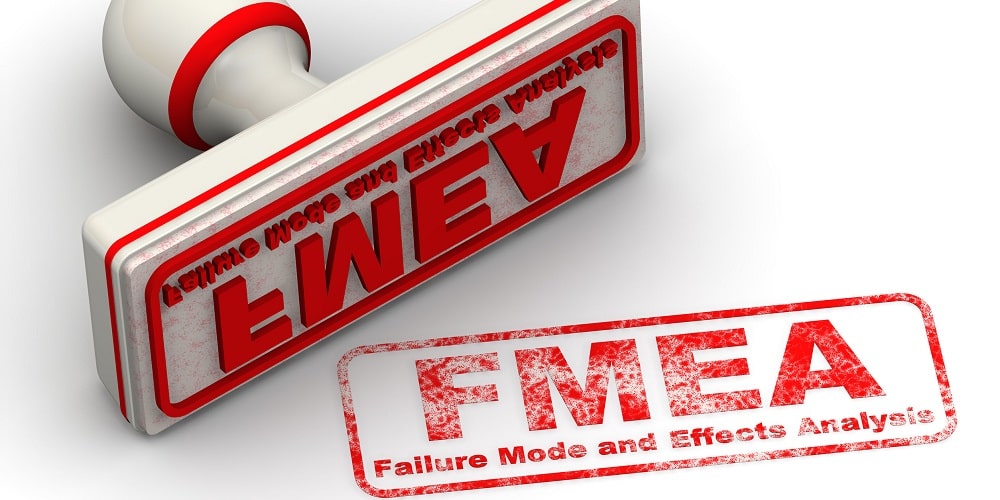Category: FMEA

Understanding the Concept of Quality
Updated:Quality is one of those words and concepts that have many meanings. Let’s review the concept and discuss the different definitions of quality. Quality refers to the degree of excellence or superiority of something, often in relation to its intended purpose or function. It is a measure of how well something meets its specifications or […]
Read more »
How to Create a Successful FMEA Program
Published:Imagine a team has performed a couple of failure mode and effects analyses (FMEAs) and the outcomes have been positive. In fact, the results have been so successful that the company wants to expand use of the technique enterprise-wide. How can this best be done? This article breaks this expansion process into two stages: 1) […]
Read more »
Supplement FMEA with a Risk Priority Matrix for Better Results
Published:Within the world of risk management – a common aspect of improvement projects – there is a distinction between response and mitigation. A response is taken in reaction to risk, while mitigation is undertaken proactively. Thus, responses are implemented once risk materializes, and mitigation actions must be planned and implemented before a risk presents itself. […]
Read more »
Avoid Failure When Using Failure Modes and Effects Analysis (FMEA)
Updated:FMEA is a risk assessment tool. Through the structured approach of an FMEA, improvement teams identify possible ways in which a product or process can fail, specify the subsequent effects, quantify the severity of those potential failures, and assess the likelihood of their occurrence. FMEA can be used to rank and prioritize the possible causes […]
Read more »
Leverage Six Sigma to Manage Operational Risk in Financial Services
Published:The recent spate of events such as rogue trading losses, flash trades and a seeming outbreak of Ponzi schemes has made many in financial services wary about their existing risk management practices. In post-financial crisis times, financial services companies are already under pressure to cut their operational costs while also being expected to comply with […]
Read more »
Harvesting Value in Transactional Processes with Lean Six Sigma
Published:While transactional processes might require a different approach, the Lean Six Sigma tools you use are the same. Follow this sequence of five tools to begin fixing your invisible problems before they reach your customers.
Read more »
Install the Four Pillars of a Quality Organization to Create Better Products
Published:A company’s profitability is mostly affected by three factors: the ability to produce quality products consistently, the efficiency with which products are produced and the ability to sell the products. Total quality control has a vigorous impact on each of these factors, and, therefore, profitability. Through careful analysis of customer wants and needs, a company […]
Read more »
FMEA Can Add Value in Various Project Stages
Published:Although it is typically taught in the Improve stage of training, the FMEA has a place in other phases. But before you can reap its many benefits, you must first be clear on how to use it.
Read more »
Design For Six Sigma Roadmap
Published:In the 21st century, new technologies will be developed and improved and will eventually be obsolete for the need of more advanced technologies. In this dynamically changing world, product cycles are expected to last for just a few months. To meet these demanding requirements product developers have to develop products in the shortest amount of […]
Read more »
Use a Modified FMEA to Mitigate Project Risks
Published:Every project faces a number of elements that risk its success. For instance, a lack of team-member availability, qualified resources, customer information, data, proven technologies, a clear scope – or deficiencies in a number of these areas – represents a risk. To prevent risks like these from happening, or at least to be prepared when […]
Read more »
Objective Defect Evaluation Leads Improvement Efforts
Published:When no process area is clearly failing, but the drive for continuous improvement remains, practitioners should use an end-effect rating system to determine where to focus efforts.
Read more »
Minimize the Risk of the Unknown in Six Sigma Projects
Published:“You don’t know what you don’t know.” That phrase has been taught in Black Belt training for many years, and it continues to be relevant today. When combined with a related phrase, “What you don’t know can hurt you,” these words illustrate a common challenge: Sometimes, the events that hurt us are unknown and unexpected. […]
Read more »
Improved IT Project Forecasting Through Six Sigma
Published:The various costs of an information technology (IT) project is forecast at the beginning of the fiscal year and usually re-forecast at the end of each month based on the actual spending pattern. Variation in the IT project forecasting process can result in either underspent or overspent budgets. As is true in most processes, variation […]
Read more »
Using Taguchi’s Loss Function to Estimate Project Benefits
Published:Financial assessment of process improvement activities is the cornerstone to project selection and to benefit evaluation. Representatives from finance organizations, charged with such a task, may be confronted with assessing a large number of projects out of many different areas within their company. For a detailed benefit assessment, often the mechanics of the process in […]
Read more »
Work-out as a Problem-Solving Tool for Healthcare
Published:Healthcare organizations face tremendous challenges in addressing efficiency, cost, quality, staffing shortages and mounting pressure to raise salaries. To bolster lagging morale and improve retention rates, management must empower staff and effectively leverage existing resources. Tools and techniques that support these imperatives are critical to the success of modern healthcare organizations. Many problems in healthcare […]
Read more »
FMEA: Tool for Process Documentation and Discovery
Published:While the name of the failure mode and effects analysis (FMEA) concentrates on how a process fails, the real objective is to concentrate on assessing the effects and process controls for the root causes related to any given failure mode. Practitioners examine the root cause-failure-effect sequence by starting in the middle and working outward. During […]
Read more »
Process Maps and FMEA Help Prepare Utility for Disaster
Published:The Six Sigma methodology contains many tools that can be used successfully throughout an organization to improve processes and prevent failures, regardless of whether the full DMAIC (Define, Measure, Analyze, Improve, Control) roadmap is used. Demonstrating the efficacy of these tools for preventing or solving real business problems is a powerful way to market Six […]
Read more »
Start with Leaner Tools to Ease Non-Belts into Six Sigma
Published:Six Sigma offers a variety of powerful tools that help organizations make data-driven decisions. Yet most people in an organization do not hold a degree in statistics and may feel that filling out endless data forms is pointless. When first starting a deployment, it is best to make things as easy and painless as possible […]
Read more »
Six Sigma Tools for Every Day Projects and Processes
Published:During a Six Sigma symposium, speaker after speaker presented good information on Six Sigma concepts, tools and approaches to use when working on a Six Sigma project. If these Six Sigma tools, approaches templates, etc., are good for Six Sigma projects, why not use them in day-to-day software development and IT processes? Learning Objectives It […]
Read more »
Leverage ITIL and Six Sigma Together to Maximize Outcome
Published:Information technology (IT) services are highly valued in today’s enterprise particularly those aligned with business needs. As IT departments transition from technology to service based management, more organizations are following the Information Technology Infrastructure Library (ITIL) framework. ITIL is a set of best practices intended to facilitate the delivery of high quality IT services. ITIL […]
Read more »
Making the Case for FMEA in Managing Software Projects
Published:Many times, a company is required to do a root cause analysis once a defect or bug is found in the software system it has developed and released to customers. Such an approach is not only costly, but almost without exception results in customer dissatisfaction. What is needed is a proactive approach to understand the […]
Read more »
Minimizing Risks: How to Apply FMEA in Services
Published:It will probably come as little surprise that something called failure modes and effects analysis (FMEA) evolved at the National Aeronautics and Space Administration, an environment where the interest in preventing failures is extremely high. FMEA was later popularized by the automobile industry and in recent years has become more widespread among Six Sigma practitioners. […]
Read more »
Bridging Functional Silos to Achieve ‘Customer Impact’
Published:During the Define phase, it is common that a project is made smaller and more manageable by limiting the scope of the business process it will address. This may, however, cause problems during the Measure and Analyze phases when root causes outside the project scope are found. An exploration of this issue is found in […]
Read more »
FMEA: Preventing a Failure Before Any Harm Is Done
Published:FMEA (failure mode and effects analysis) is a proactive tool, technique and quality method that enables the identification and prevention of process or product errors before they occur. Within healthcare, the goal is to avoid adverse events that could potentially cause harm to patients, families, employees or others in the patient care setting. As a […]
Read more »